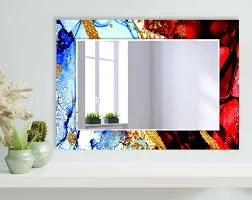

The Rise of Clear Low-E Glass Revolutionizing Architecture and Energy Efficiency
In recent years, the architectural and construction industries have witnessed a significant shift towards sustainability and energy efficiency. One of the most promising advancements in this area is the development of clear low-emissivity (low-E) glass. This innovative material is not only enhancing building aesthetics but also transforming energy consumption patterns in residential and commercial properties.
What is Clear Low-E Glass?
Clear low-E glass is a type of energy-efficient glass designed to minimize the amount of infrared and ultraviolet light that can pass through it, while still allowing a high degree of visible light transmission. The term low-E refers to the low emissivity of the glass surface, achieved by applying a microscopic coating that reflects heat. Unlike traditional glass, which allows warmth to escape in colder months and heat to enter in warmer months, low-E glass works to keep indoor temperatures stable, regardless of external weather conditions.
Energy Efficiency Benefits
One of the primary benefits of clear low-E glass is its remarkable energy efficiency. Buildings that incorporate low-E glass can significantly reduce their heating and cooling costs. According to studies, the use of low-E glass can lead to energy savings of up to 25-30% compared to traditional glazing options. This reduction in energy consumption not only lowers utility bills for homeowners and business owners but also minimizes the overall carbon footprint, making buildings more environmentally friendly.
Additionally, low-E glass contributes to indoor comfort. It helps maintain a more consistent indoor temperature while reducing glare from sunlight, thus providing a more pleasant environment for occupants. This is particularly beneficial in climates with extreme temperatures, where maintaining a stable indoor climate can be challenging.
Aesthetic Appeal

Beyond its functional attributes, clear low-E glass also offers aesthetic advantages. Architects and designers are increasingly incorporating this material into their projects to enhance the visual appeal of buildings. Low-E glass can be manufactured in a variety of thicknesses and finishes, allowing for flexibility in design without compromising on the visual clarity of the glass.
The ability to achieve large windows and glass facades without excessive heat gain or loss has become a hallmark of modern architecture. Buildings can now feature expansive glass surfaces that invite natural light, creating vibrant, welcoming environments. This trend aligns with contemporary design principles that prioritize open, airy spaces, enhancing the overall experience for occupants and visitors alike.
Environmental Impact and Sustainability
As the world becomes more aware of the implications of climate change and environmental degradation, the demand for sustainable building materials has surged. Clear low-E glass plays a crucial role in this movement by reducing reliance on non-renewable energy sources. Buildings equipped with low-E glass contribute to LEED (Leadership in Energy and Environmental Design) certification and other sustainability programs, which are becoming increasingly important in the construction industry.
Moreover, the manufacture of low-E glass is continuously improving, with advances in technology leading to more eco-friendly production processes. This not only reduces the environmental impact during manufacturing but also ensures that the glass remains durable and effective over time.
Conclusion
In a world focused on sustainability, energy efficiency, and innovative design, clear low-E glass stands out as a transformative solution. It offers a unique combination of functionality, aesthetic appeal, and environmental benefits, making it an ideal choice for modern architecture. As the industry continues to evolve, the adoption of low-E glass in buildings is likely to increase, driving forward the vision of eco-friendly and energy-efficient structures that prioritize comfort without compromising style. The future of architecture is bright, and clear low-E glass is undoubtedly one of its shining stars.